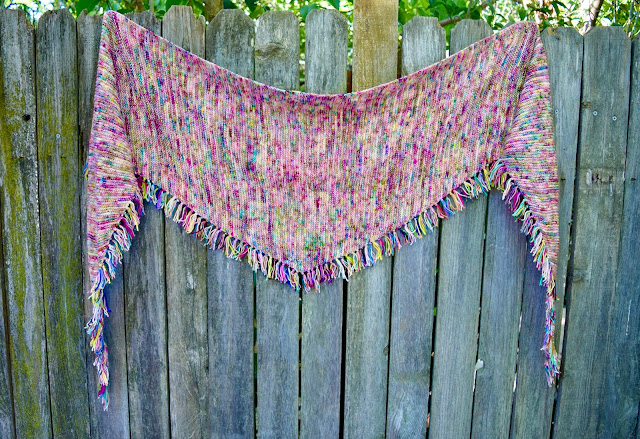Free the Fringe is so fun and easy to knit! If you are looking for a first shawl project this is the perfect one! Free the Fringe uses only knit stitches, KFB increasing, and K2TOG decreasing.
I knit Free the Fringe in fingering weight but the size of the shawl depends on how much yarn you have. You can knit it with any weight of yarn and the corresponding needle size. For this shawl the stitch numbers aren't important the grams amount that you knit per side is what is important. Keeping track of how many grams you use will let you know when you are done with increasing to switch to decreasing.
I added extra colors of yarn to my fringe to give more color but that isn't necessary for a successful knit. I can't wait to see the combinations you come up with!











